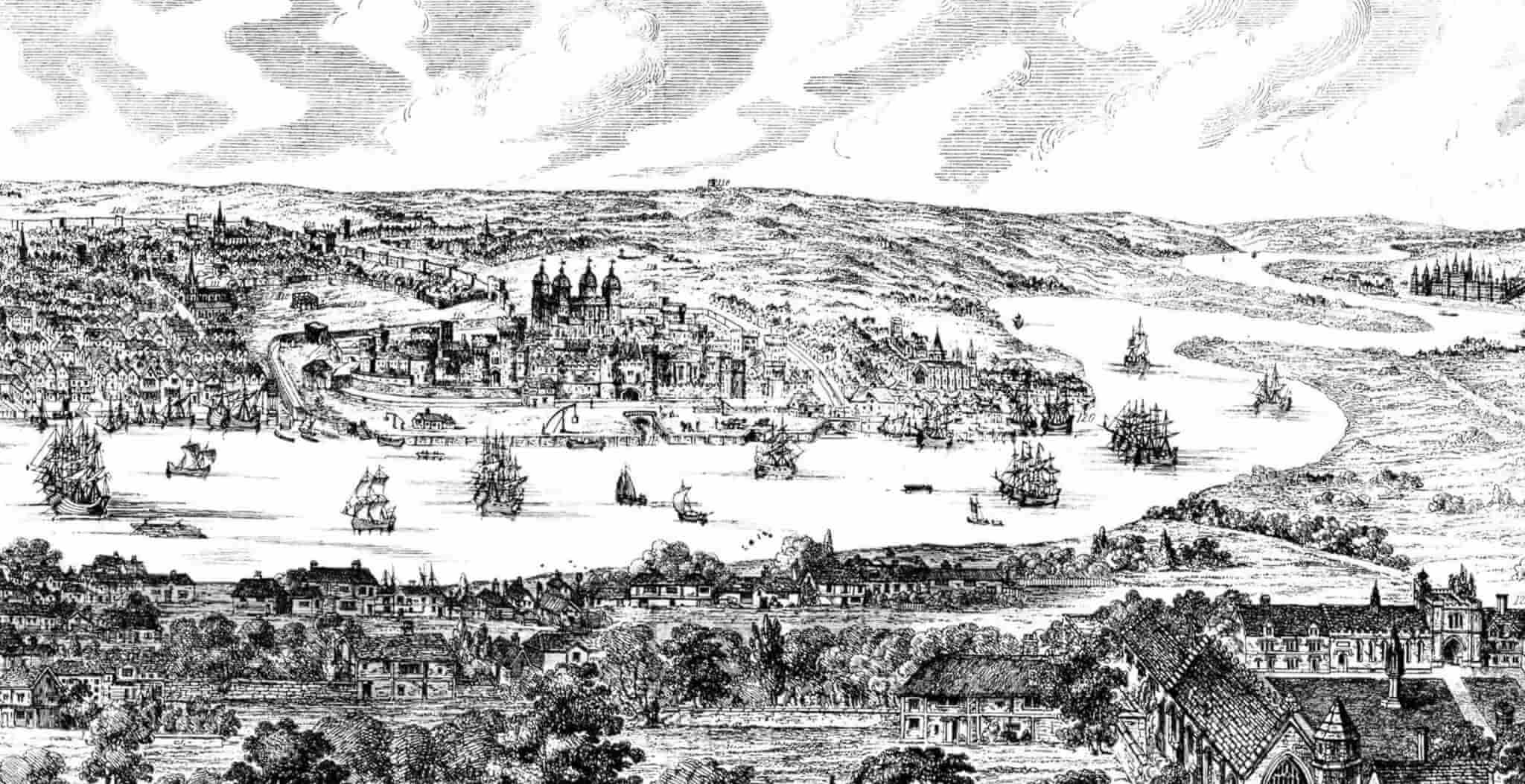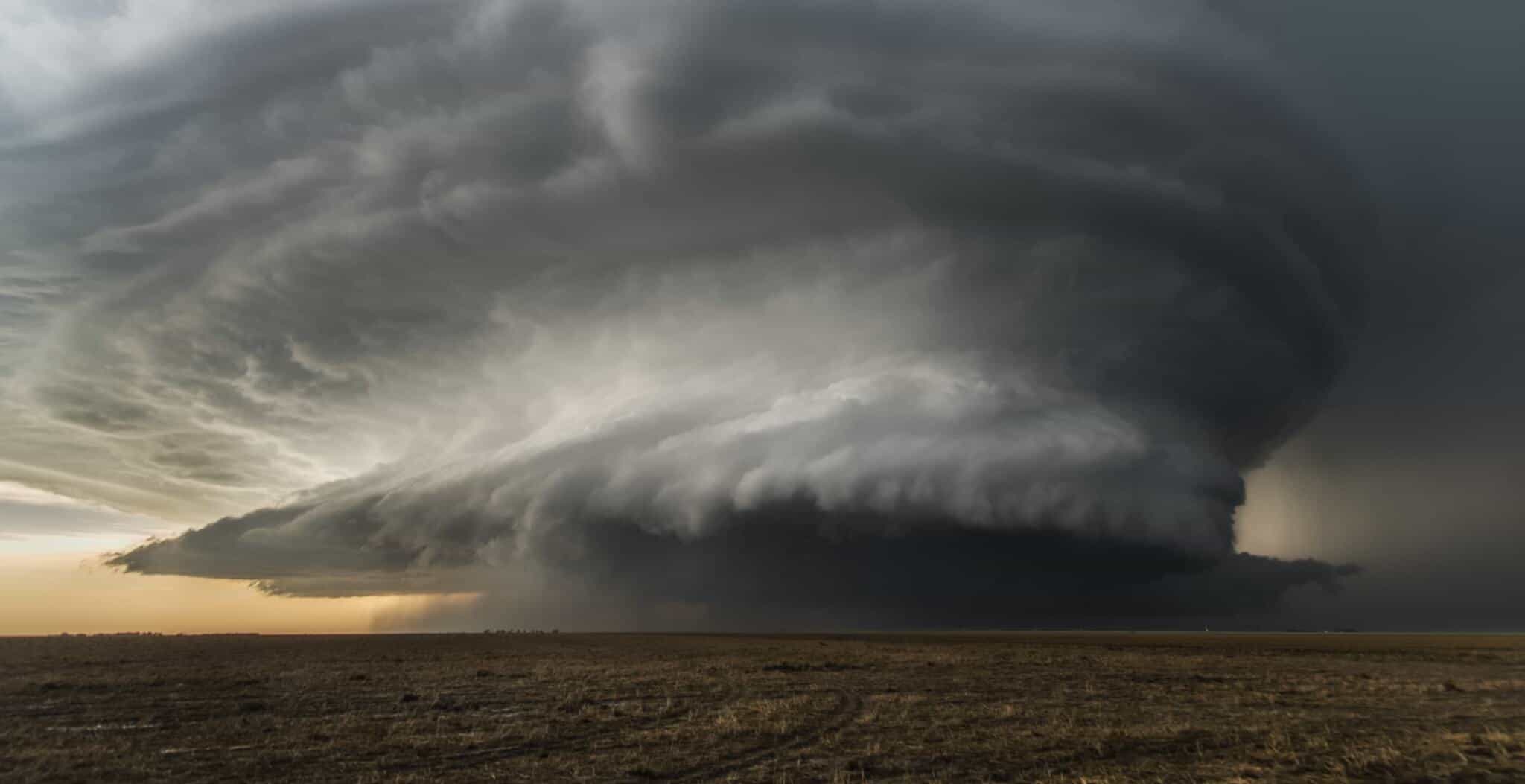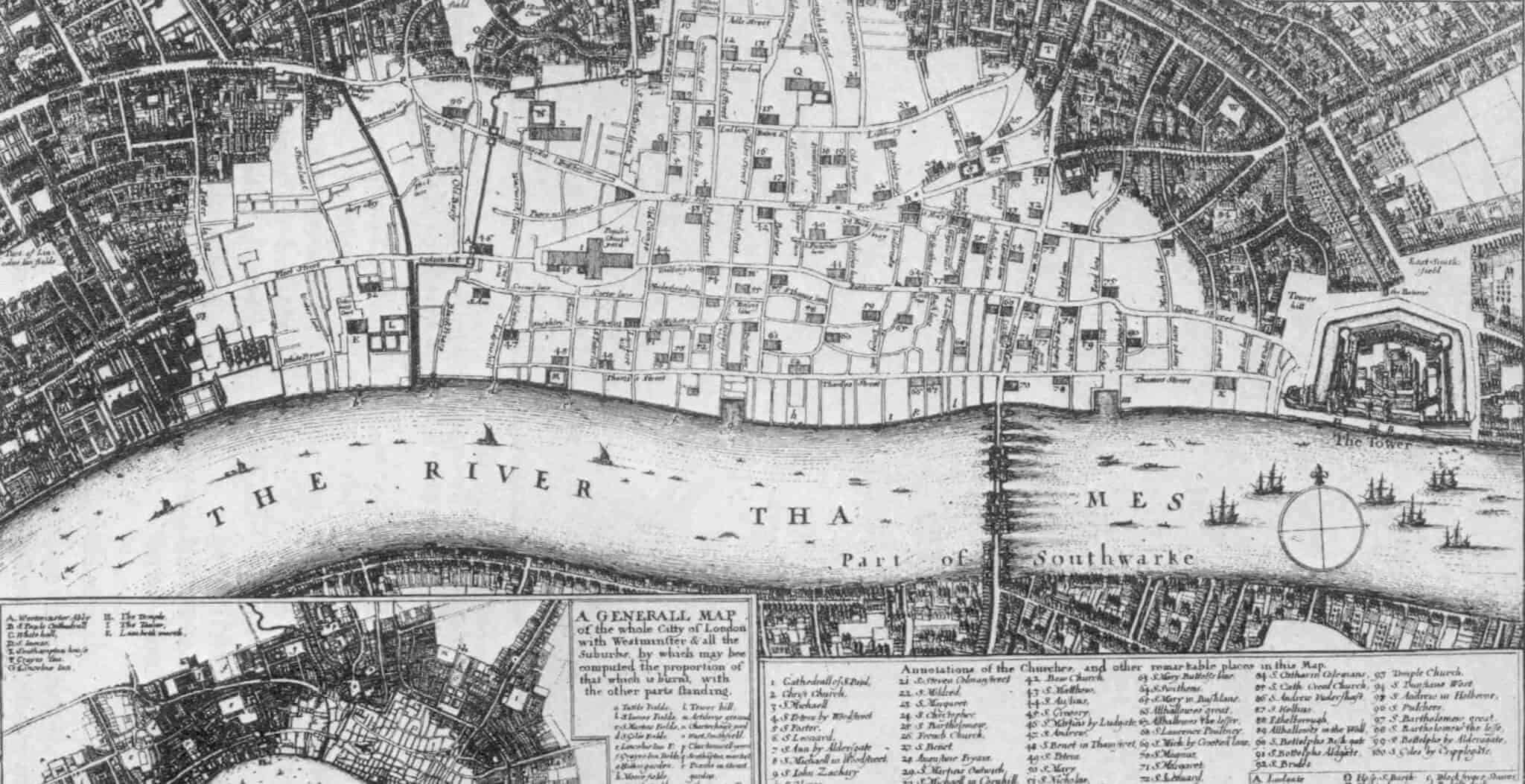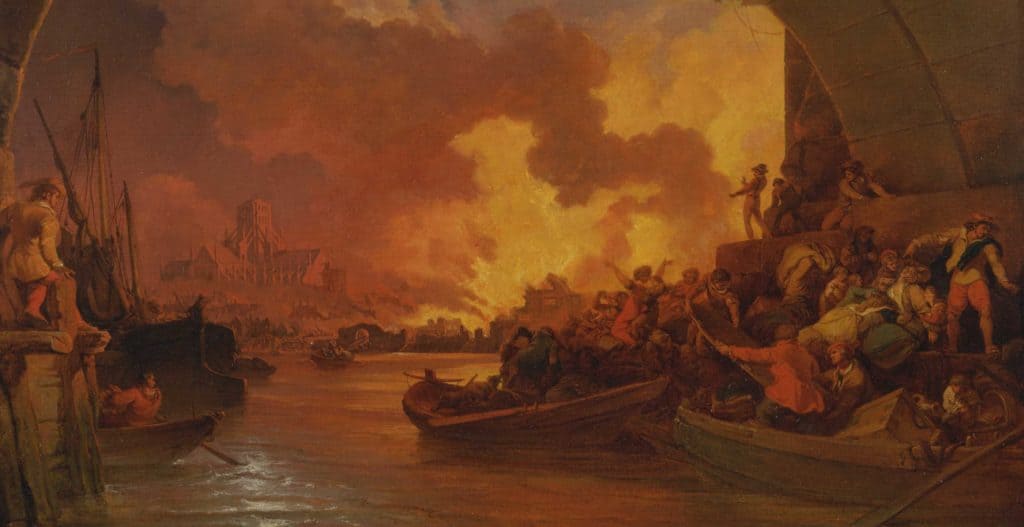Mention ‘The Great Fire of London’ and most people think of the 1666 disaster when, although a great many buildings were destroyed and the fire raged for days, relatively few people died.
London has however experienced many great fires, some with much higher death tolls than that of 1666. Boudica and the Iceni razed the city to the ground in 60AD and there were the two notable fires in 675 and 989. St Paul’s Cathedral was burnt to the ground during the fire of 1087. In 1135 London Bridge was destroyed by flames and was rebuilt in stone. In 1794 there was the Ratcliffe Fire and then as late as 1861 there was the Tooley Street Fire.
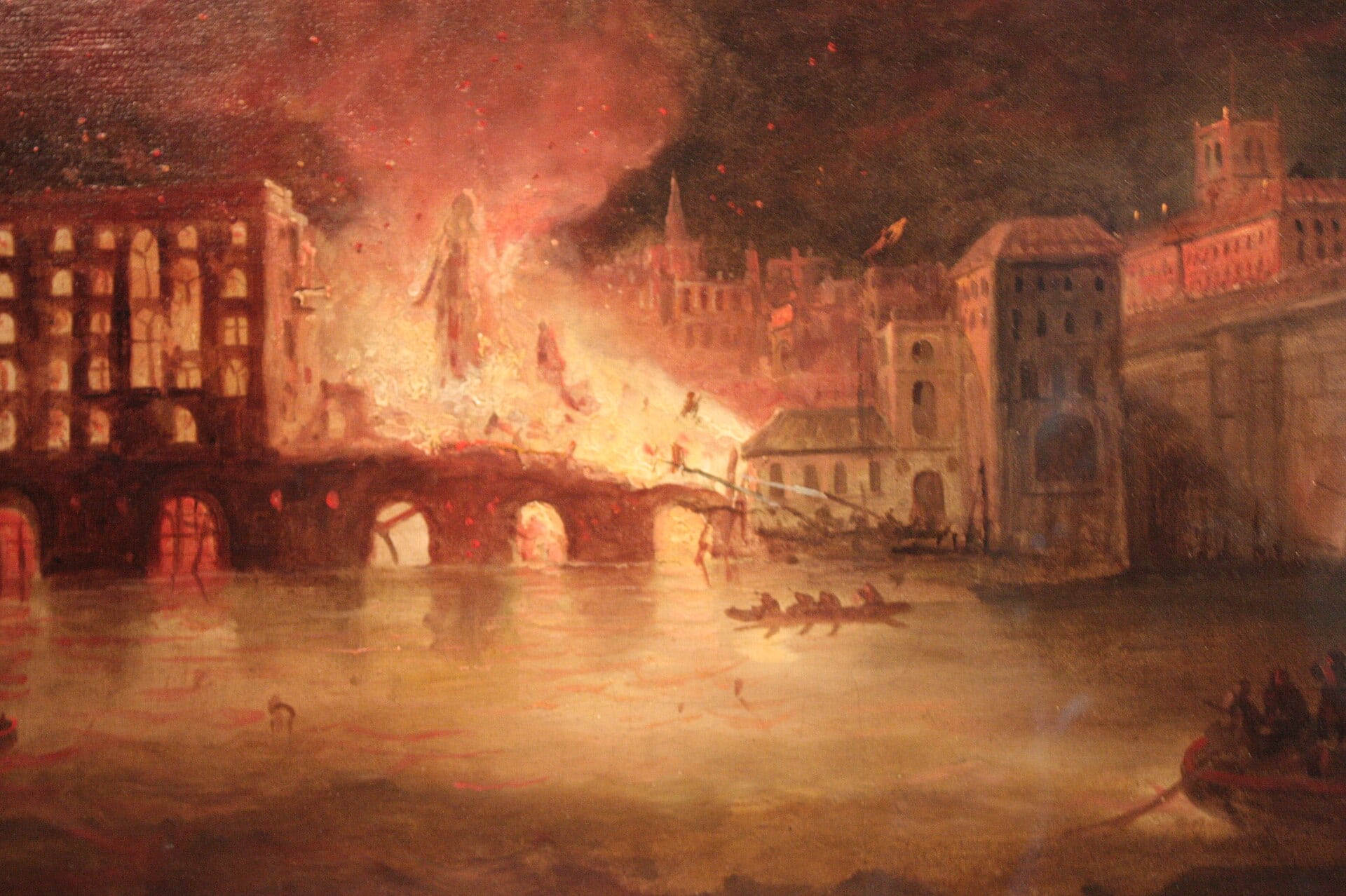
Fires were a relatively common occurrence, particularly in medieval and Tudor London. Houses were largely constructed from wood and pitch and were crowded together, side by side with commerce and manufacturing. There was no organised fire brigade in the capital at this time: leather buckets and water squirts were used to fight fires but usually to little effect.
The fire of 1212, also known as the Great Fire of Southwark, started south of the Thames in Southwark sometime between the 10th and 12th July 1212. Southwark’s cathedral church of St Mary Overie (‘over the river’), also known as Our Lady of the Canons, was completely destroyed along with most of Borough High Street. The blaze then reached London Bridge.
High winds fed the fire and red hot cinders were blown across the river, causing the wooden buildings with their straw roofs at the northern end of the bridge to also catch fire. The fire then spread into the City of London.
However the greatest loss of life occurred on London Bridge itself. People fleeing from the fire in Southwark converged with people coming from the northern side of the river to help. But everyone on the bridge was now trapped as the fire had spread to both sides of the river. King John had approved the construction of wooden shops and houses on the bridge and soon these were also alight.
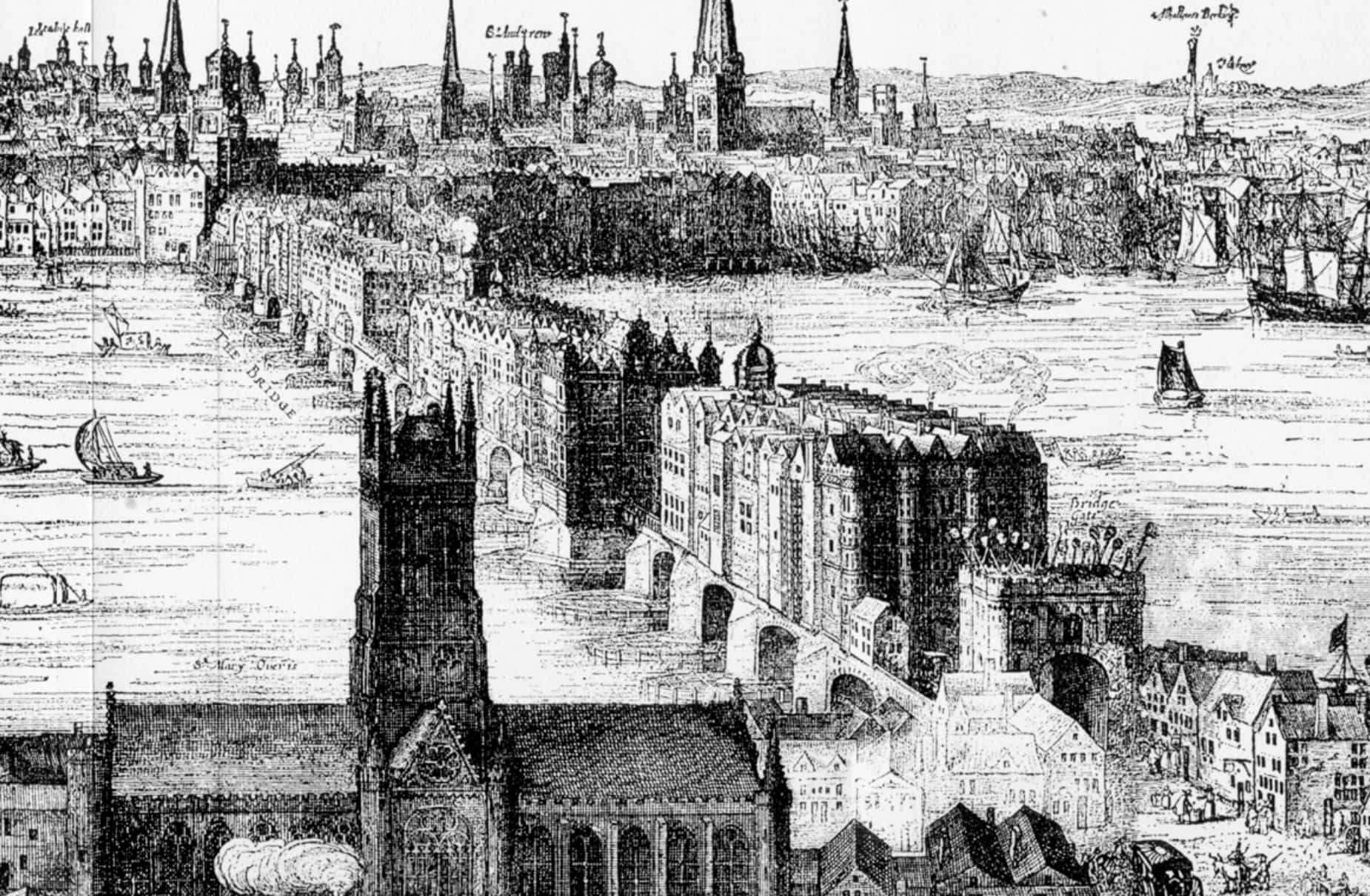
Those on the bridge who weren’t killed by the flames either jumped and drowned in the river, or were crushed as they tried to board overloaded rescue boats.
It is uncertain how many people died in the fire. An account written in 1603 by John Stow gives the number of casualties as over 3,000, however most modern historians think this is an exaggeration as at the time, the whole population of London was no more than 50,000.
The earliest account of the 1212 fire appears in the Liber de Antiquis Legibus (“Book on Ancient Laws”), written in 1274: “In this year was the Great Fire of Southwark, and it burned the church of St Mary [Overie], as also the Bridge, with the chapel there, and the great part of the city.”
As London Bridge was built of stone, it survived the fire but the damage was so great that for years afterwards it was only partly usable.
